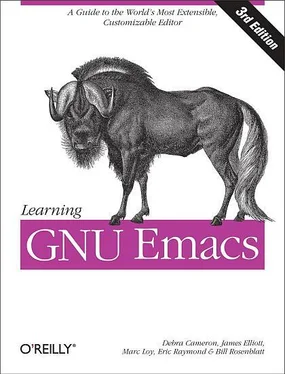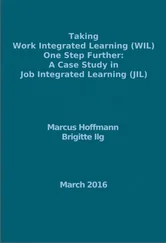(:foreground "Firebrick" :slant italic)))))
Note that not all displays support all of the possible variations of bold, italic, underline, colors, and so on. This is a classic case of "your mileage may vary." Still, with the ability to customize it all yourself, you should be able to find a combination that works well on your system.
The remaining sections in this chapter deal with several of the language-specific modes including JDEE, a suite of packages devoted to the world of Java development in Emacs.
You need not read all of these sections if you are interested in only one or two of the languages. If you program in another language for which Emacs has a mode, you may want to read one of the following sections to get the "flavor" of a language mode; all language modes have the same basic concepts, so this should get you off to a good start. Indeed, many language modes use another mode as a base. For example, Java mode is really just an extension of C mode.
Emacs automatically enters C mode when you visit a file whose suffix is .c , .h , .y (for yaccgrammars), or .lex ( lexspecification files). Emacs invokes C++ mode when you visit a file whose suffix is .C , .H , .cc , .hh , .cpp , .cxx , .hxx , .c++ , or .h++ . You can also put any file in C mode manually by typing M-x c-mode Enter. Similarly, you can use c++-modeto put a buffer into C++ mode.
Both C and C++ modes are implemented in the same Emacs Lisp package, called cc-mode, [62]which also includes a mode for the Objective-C language used in Mac OS X. C mode understands both ANSI C and the older Kernighan and Ritchie C syntax. We describe C mode functions, but you should assume that everything also applies to C++ mode. C++ mode has a small number of additional features, which we describe at the end of this section.
We should also note that the Emacs mode for Perl is derived from an older version of C mode. If you program in Perl, you will find that virtually all of the motion, indentation, and formatting commands in C mode apply equally to Perl mode, with perl-replacing c-in their names. Emacs invokes Perl mode on files with suffix .pl . (However, to be honest we prefer CPerl mode, discussed later in this chapter.)
In C mode, Emacs understands the syntax elements described earlier in this chapter. The characters semicolon (;), colon (:), comma (,) curly braces ({ and }), and pound sign (#, for C preprocessor commands) are all electric, meaning that Emacs automatically indents the current line when you type them. It also actively uses the font options when you have font-lock mode turned on.
In addition to the standard Emacs commands for words and sentences (which are mainly useful only inside multiline comments), C mode contains advanced commands that know about statements, functions, [63]and preprocessor conditionals. A summary of these commands appears in Table 9-3.
Table 9-3. Advanced C motion commands
| Keystrokes |
Command name |
Action |
| M-a |
c-beginning-of-statement |
Move to the beginning of the current statement. |
| M-e |
c-end-of-statement |
Move to the end of the current statement. |
| M-q |
c-fill-paragraph |
If in comment, fill the paragraph, preserving indentations and decorations. |
| C-M-a |
beginning-of-defun |
Move to the beginning of the body of the function surrounding the point. |
| C-M-e |
end-of-defun |
Move to the end of the function. |
| C-M-h |
c-mark-function |
Put the cursor at the beginning of the function, the mark at the end. |
| C-c C-q |
c-indent-defun |
Indent the entire function according to indentation style. |
| C-c C-u |
c-up-conditional |
Move to the beginning of the current preprocessor conditional. |
| C-c C-p |
c-backward-conditional |
Move to the previous preprocessor conditional. |
| C-c C-n |
c-forward-conditional |
Move to the next preprocessor conditional. |
Notice that the statement motion commands have the same key bindings as backward-sentenceand forward-sentence, respectively. In fact, they act as sentence commands if you use them within a C comment.
Similarly, M-qis normally the fill-paragraphcommand; C mode augments it with the ability to preserve indentations and decorative characters at the beginnings of lines. For example, if your cursor is anywhere in this comment:
/* This is
* a
* comment paragraph with wildly differing right
* margins.
* It goes on for a while,
* then stops. */
typing M-qhas this result:
/* This is a comment paragraph with wildly differing right margins.
* It goes on for a while, then stops. */
You will find that the preprocessor conditional motion commands are a godsend if you have to slog through someone else's voluminous code. Especially if you're faced with code built to run on a variety of systems—like Emacs itself—often the most important question you need answered is, "What code is actually compiled?"
With C-c C-u, you can tell instantly what preprocessor conditional governs the code in question. Consider this code block:
#define LUCYX
#define BADEXIT -1
#ifdef LUCYX
...
*ptyv = open ("/dev/ptc", O_RDWR | O_NDELAY, 0);
if (fd < 0)
return BADEXIT;
...
#else
...
fprintf (stderr, "You can't do that on this system!");
...
#endif
Imagine that the ellipses ( ...) represent hundreds of lines of code. Now suppose you are trying to determine under what conditions the file /dev/ptc is opened. If your cursor is on that line of code, you can type C-c C-u, and the cursor moves to the line #ifdef LUCYX—telling you that the code is compiled if you're on a LUCYX system. If you want to skip the code that would not be compiled and go directly to the end of the conditional, type C-c C-n. We will see another command that is useful for dealing with C preprocessor code later in this section.
C statement and statement block delimiter characters are bound to commands that, in addition to inserting the appropriate character, also provide proper indentation. These characters are {, }, ;, and : (for labels and switchcases). For example, if you are closing out a statement block or function body, you can press C-j(or Enter) and type }, and Emacs lines it up with its matching {. This eliminates the need for you to scroll back through the code to find out what column the {is in.
Читать дальше












